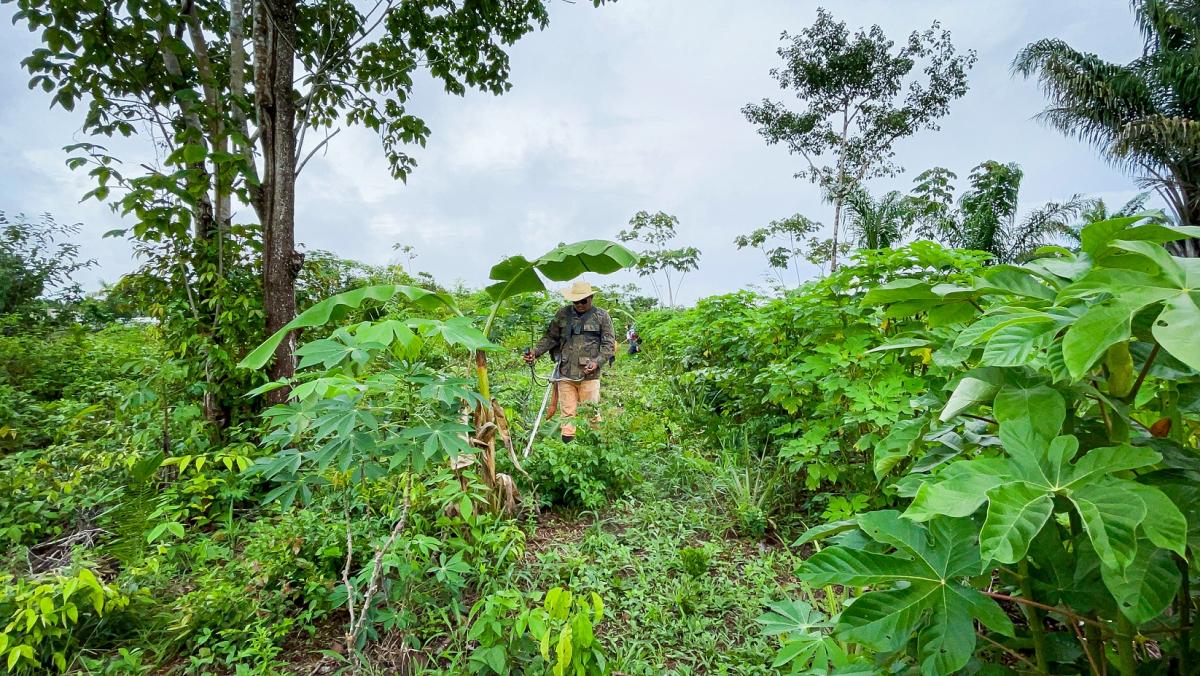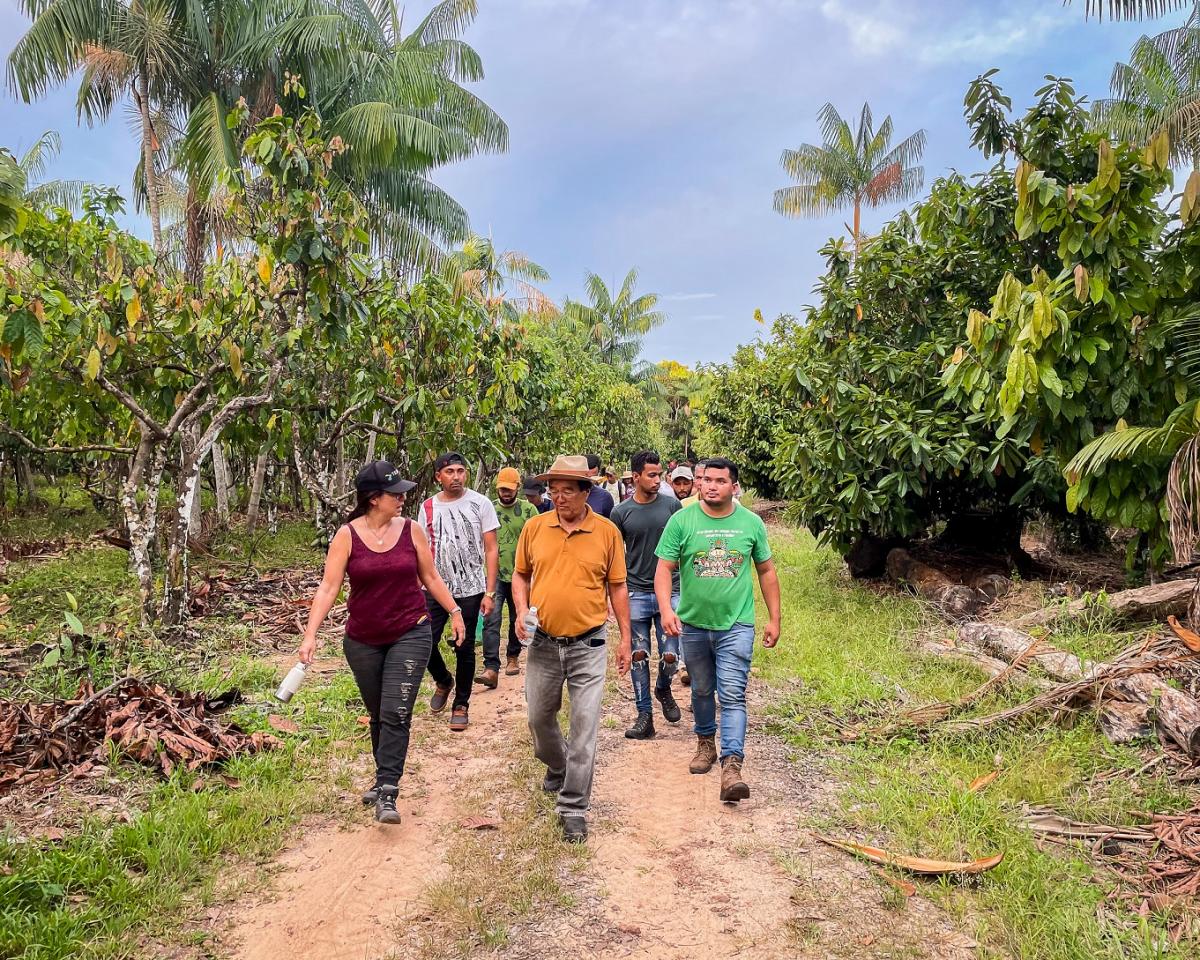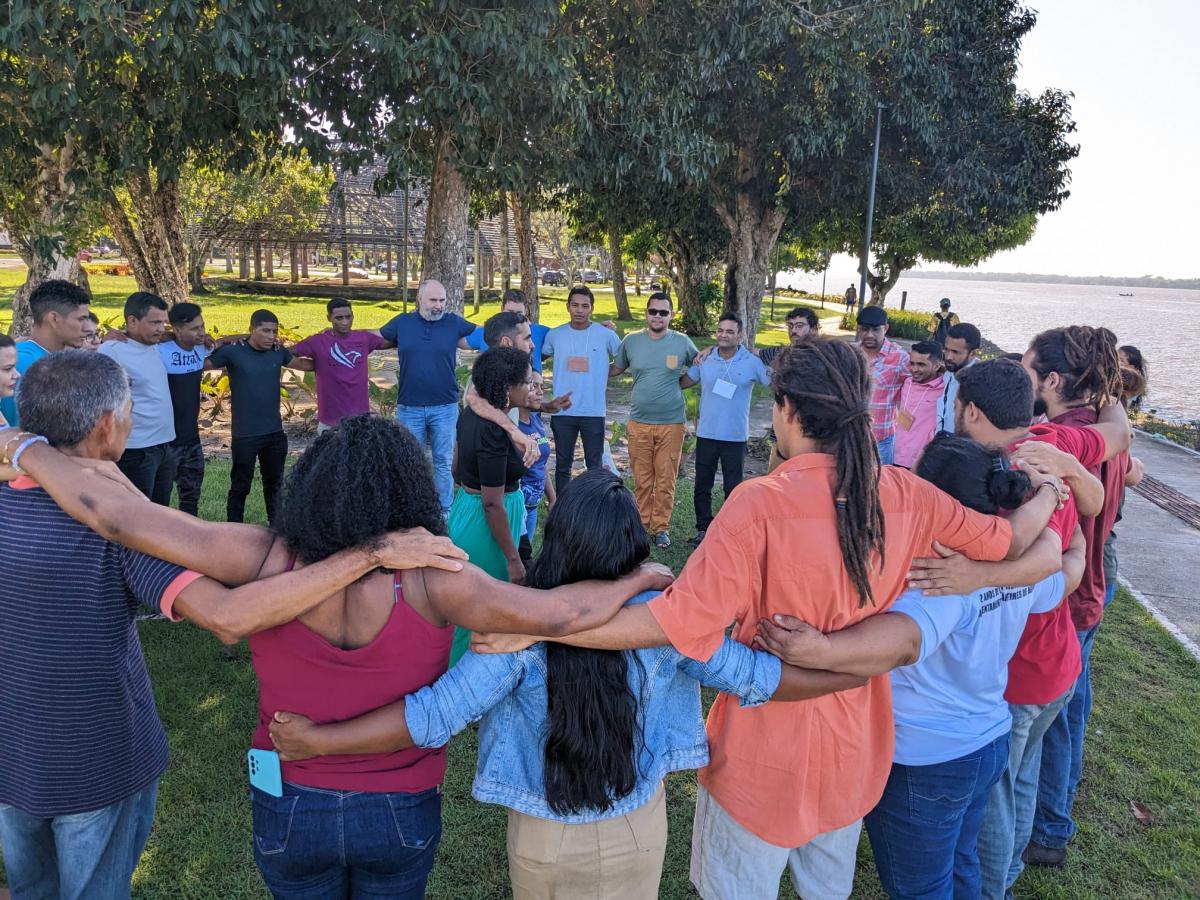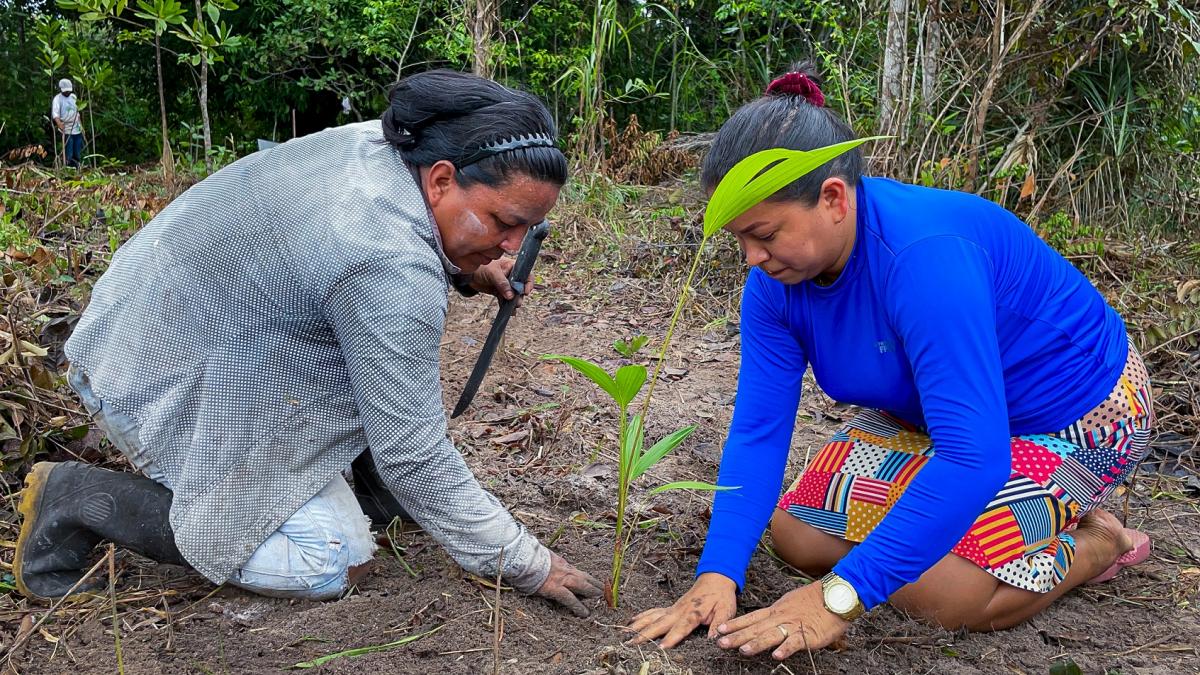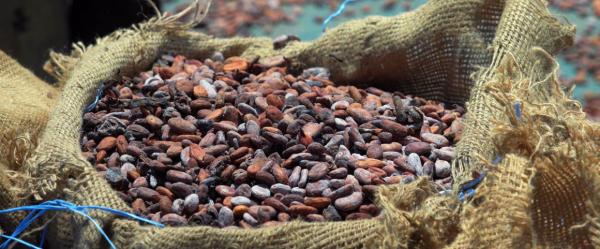Expert view 30 September 2025
- Home
- CIRAD news
- News
- Agroforestry to restore forests in the Amazon
Restoring forests is good for people too
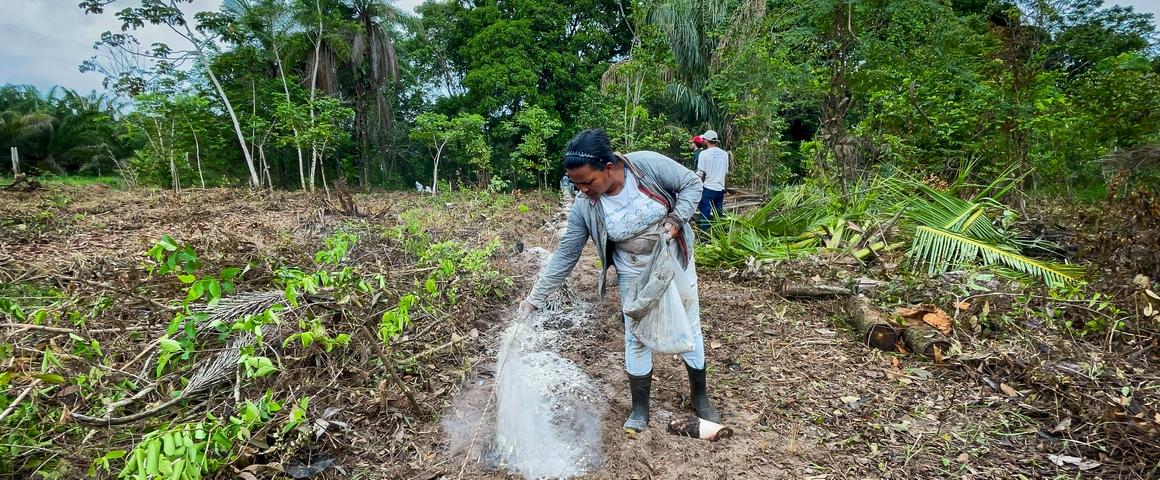
Forest restoration operation in Pará state, Brazil, using agroecological practices focusing on au soil health and making wide use of local biodiversity © Ianca Moreira, Refloramaz
Lívia Navegantes is an agronomy tutor at the Federal University of Pará (UFPA), in Belem, Brazil. She is working with a group of smallholders on agroforestry systems and degraded land restoration in the Brazilian Amazon. When she asked the farmers involved what were the first things to change as trees returned, the answer was "ourselves". "I expected them to talk about their animals, about improved production or vegetation. In fact, the first thing they mentioned was their food supply and health. Agroforests have changed their entire lives."
Agroforests are landscapes in which cocoa, bananas and palms grow side by side, along with a ground cover such as beans or cassava for the first few years. Some agroforestry systems centre on five tree species per hectare, but others are much richer in biodiversity, with more than a hundred species. "We build these systems based on natural forests, so we try to make use of their vast biodiversity", Lívia Navegantes adds. "The idea is that there should be plants on every storey. This means we have creeping plants, small shrubs that like shade, and tall trees that reach for the light. And this aerial stratification is mirrored by the root systems."
Agroforestry practices restore soils and landscapers that have been degraded by monocultures not suited to the context in the Amazon. They guarantee greater sustainability and better living conditions for local people, on an environmental, economic and social level. Farmers like to say that they grow "food forests", but in addition to producing food, agroforests also include medicinal plants and timber trees.
Science still underestimates the extent of farmers' knowledge
Lívia Navegantes' studies of agroforestry practices have primarily been done under the umbrella of Sustenta e Inova, a development project funded by the European Union and coordinated by the Brazilian Micro and Small Business Support Service (Sebrae) in Pará. Under the project, CIRAD has been working on degraded landscape restoration, alongside longstanding Brazilian partners such as UFPA, the Rural Federal University of the Amazon (UFRA) and EMBRAPA. The scientists involved have mapped more than 400 farmer-led forest restoration initiatives in the eastern Brazilian Amazon, around Belem, and have discovered that 78% of farmers working to restore forests have made use of agroforestry.
However, such forest restoration initiatives remain marginal, and agroforestry is far from widespread. On the whole, in municipalities with several thousand farmers, only a hundred practice agroforestry. However, the movement is beginning to emerge and warrants both studies and support. "Who are these Amazonian farmers trying to restore forests, and what prompts them to adopt agroforestry?" asks CIRAD socioeconomist Emilie Coudel. "Within Sustenta e Inova, we are trying to document the entire range of agricultural restoration practices, and we organize meetings between farmers to allow them to compare notes and learn from each other."
She and Lívia Navegantes have set up a research group involving scientists, students and farmers: Refloramaz. "We are working together to find sustainable ways of producing in the Amazon", says Lívia Navegantes. "We talk about the species to use, the best organic fertilization techniques, and the best combinations of species." And Emilie Coudel adds: "We are trying to support emerging alternatives. We suggest to farmers that we work together to build specifications for their systems, and most of all, we reassure them that the knowledge they have is both relevant and valuable, and that they are the true masters in terms of agroforestry".
To provide this farmer network with training, the Refloramaz group, with the support of Sustenta e Inova, has launched a university course (MSc level) for rural community leaders. Some 40 people are currently on the course, ranging from senior staff from NGOs or public institutions to farmers, through rural schoolteachers. Above all, this somewhat atypical research group seeks to promote farmers' knowledge. As Lívia Navegantes stresses, "the farmers practising agroecology in the Amazon often come from families that have built up knowledge over several decades. They can instantly tell us which plant will work best for which use and how such and such a shrub will react if we prune it in such and such a way. Science continues to vastly underestimate the extent of their knowledge of plants and the forest".
Networks to disseminate knowledge
Refloramaz brings together very different rural communities, including farmers, indigenous tribes and African descendants. Each group has its own agroforestry practices, which proves that there is no single restoration solution. However, they all follow the same basic agroecological principles, centring on soil health and on using a wide range of biodiversity. As Emilie Coudel explains, "one of the aims of Refloramaz is to build a network of farmers with shared values. The network is building its own political legitimacy, which will allow it to propose actions and public policies better suited to the farmers' reality, to support agroforestry and forest restoration".
Over and above the agronomic issues, the Refloramaz student farmers have confirmed their role as "farmers' leaders". By working with scientists and the local authorities, they have taken on a political role in advocating for the rollout of agroforestry practices across the Amazon. Collective workshops aimed at setting up new agroforests have allowed these student farmers to encourage their community to come on board and to discuss soil health and agroforestry practices.
Joice Ferreira is an ecologist with EMBRAPA. She is also one of the people behind the Refloramaz group: "It is absolutely vital that local communities make a commitment, if forest restoration is to be done in the right way, reflecting local cultural values and above all responding to local requirements. This is a crucial time for Brazil in this respect. The national restoration plan is being revised and will be launched at the end of this year, with new targets and new strategies. The Pará restoration plan was launched in late 2023. In other words, the time has come to roll out these plans, to make them fully operational. Refloramaz is playing a big part in this, by providing advice on how to build restoration processes founded on co-construction with local communities, and focusing on their knowledge, interests and potential".
There are many women among the Refloramaz student farmers. For Lívia Navegantes, this is no coincidence: "In the Brazilian Amazon, women are very involved in restoration. They are often the ones who care for their families, in terms of both diet and health. For instance, most of them know a wide range of medicinal plants. As far as they are concerned, taking care of their family also means taking care of the environment."
At COP21 in 2015, Brazil committed to restoring 12 million hectares of forest by 2030. That commitment tallied with the targets set by the UN decade on Ecosystem Restoration. Since then, that promise has resulted in several actions, ranging from the fight against deforestation to the restoration of degraded grazing land. In 2025, the country is due to host the COP30 climate conference, in Belem, which will be an opportunity to take stock, ten years on.

























